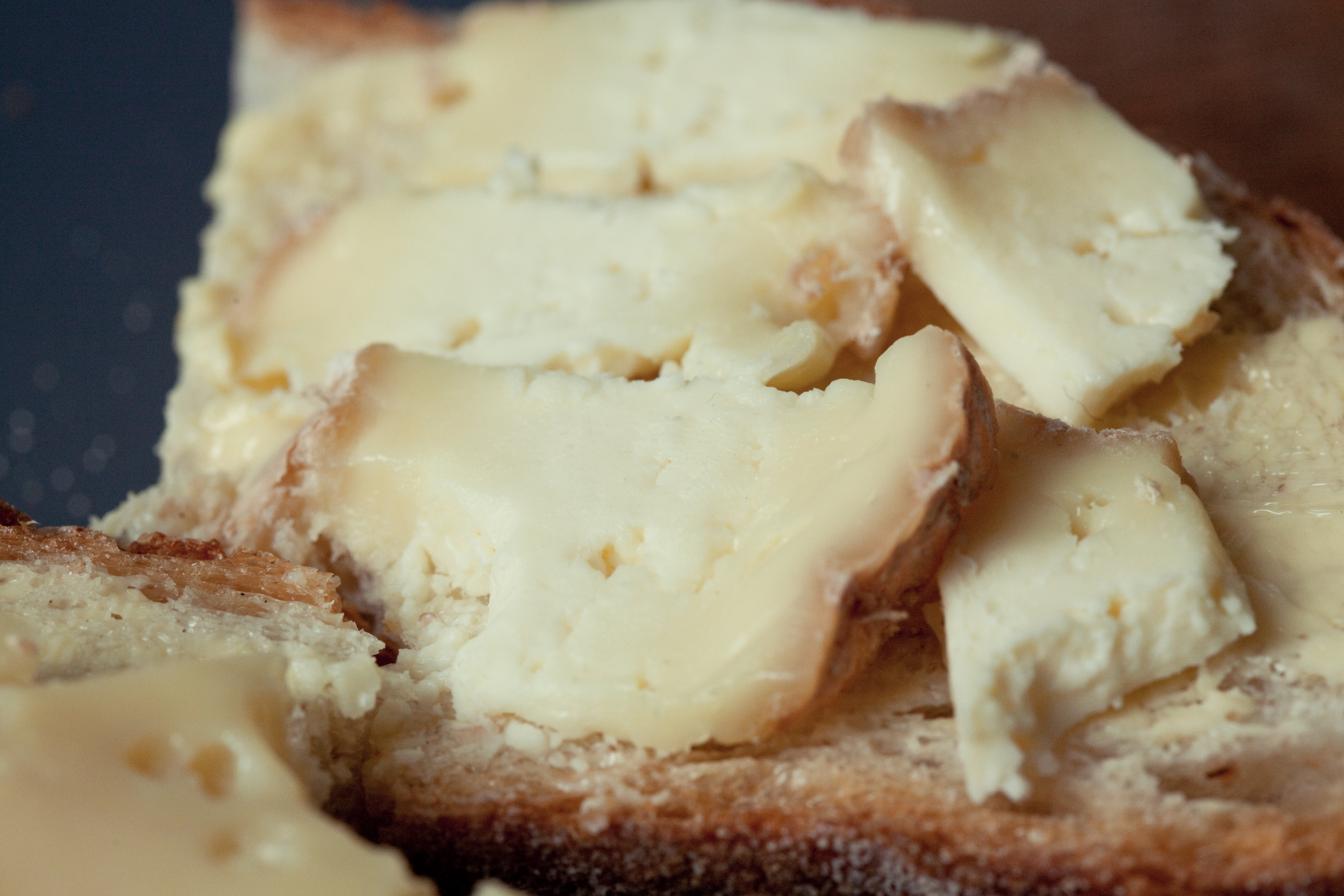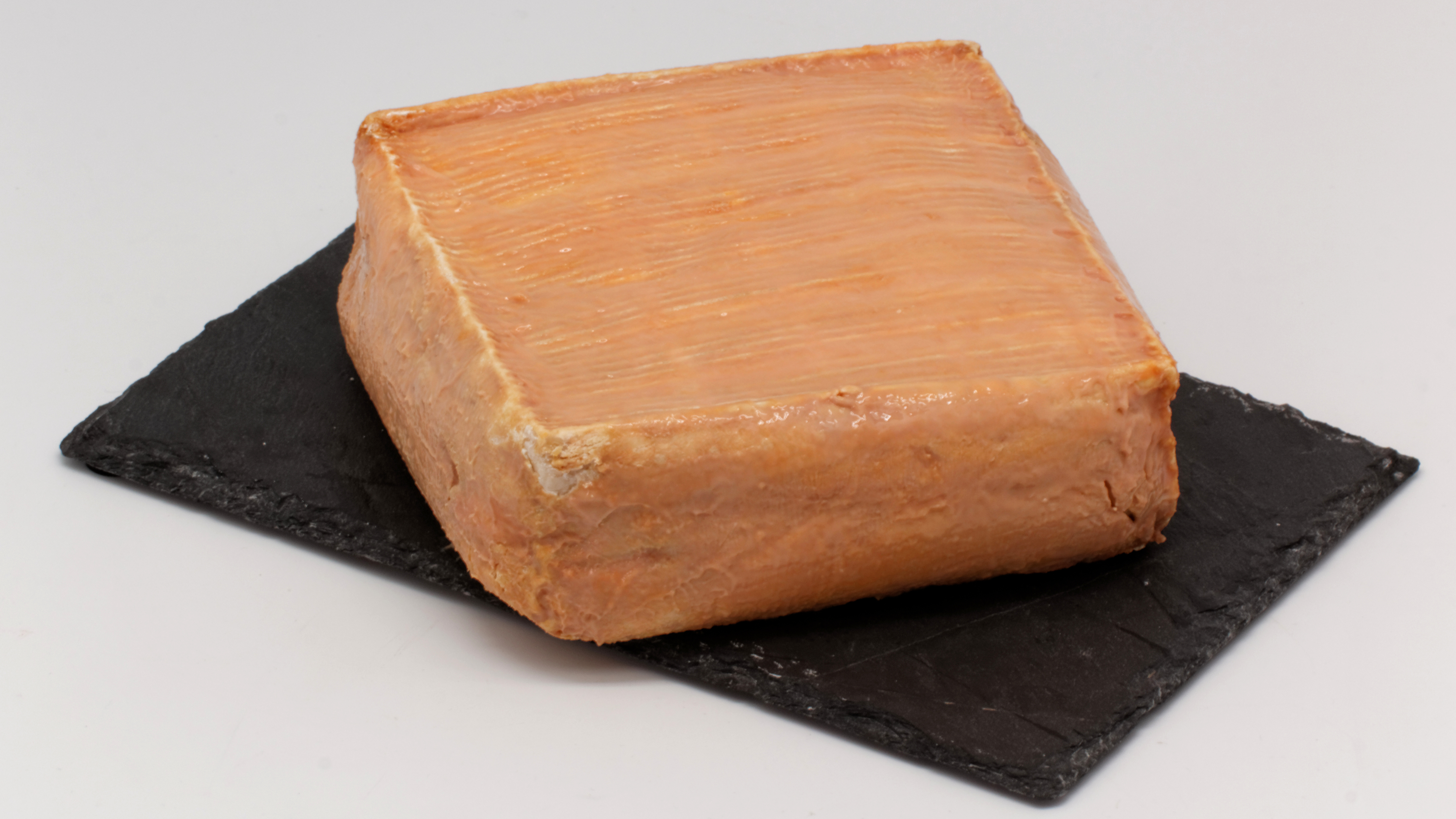|
Washed-rind Cheese
Washed-rind or smear-ripened cheeses are cheeses which are periodically treated with brine or mold-bearing agents. This encourages the growth of certain bacteria on their surface which give them distinctive flavors. There are hard and soft washed-rind cheeses. The softer ones are sometimes distinguished as "smear-ripened". Conversely, the term "washed rind" is sometimes reserved only for the hard ones. Production Washed-rind cheeses are periodically cured in a solution of saltwater brine or mold-bearing agents that may include beer, wine, brandy and spices, making their surfaces amenable to a class of bacteria (''Brevibacterium linens'', the reddish-orange smear bacteria) that impart pungent odors and distinctive flavors and produce a firm, flavorful rind around the cheese. at Practically Edible Food Encyclope ... [...More Info...] [...Related Items...] OR: [Wikipedia] [Google] [Baidu] |
Cheese
Cheese is a dairy product produced in wide ranges of flavors, textures, and forms by coagulation of the milk protein casein. It comprises proteins and fat from milk, usually the milk of cows, buffalo, goats, or sheep. During production, milk is usually acidified and the enzymes of either rennet or bacterial enzymes with similar activity are added to cause the casein to coagulate. The solid curds are then separated from the liquid whey and pressed into finished cheese. Some cheeses have aromatic molds on the rind, the outer layer, or throughout. Over a thousand types of cheese exist and are produced in various countries. Their styles, textures and flavors depend on the origin of the milk (including the animal's diet), whether they have been pasteurized, the butterfat content, the bacteria and mold, the processing, and how long they have been aged. Herbs, spices, or wood smoke may be used as flavoring agents. The yellow to red color of many cheeses is produced by adding a ... [...More Info...] [...Related Items...] OR: [Wikipedia] [Google] [Baidu] |
Fontina
Fontina (French: ''Fontine'') is a cow's milk cheese, first produced in Italy. Over time, production of Fontina has spread worldwide, including the United States, Denmark, Sweden, Canada, France and Argentina. Description Fontina is a cheese that is semisoft to hard in texture and mild to medium-sharp in flavor. It has a milk fat content around 45%. The characteristic flavor of Fontina is mild but distinctively nutty and savoury. Fontinas from Sweden, Denmark, and the United States have milder flavour, softer texture, and more holes than those of Italy. Fontina cheese has been made in the Aosta Valley, in the Alps since the 12th century. Fontina produced in the EU can be identified by a Consorzio (Consortium) stamp of the Matterhorn including the script "FONTINA". As with many other varieties, the name "Fontina" has derivatives such as "Fontinella", "Fontal", and "Fontella". Although the version from the Aosta Valley is the original and the most famous, a derivative producti ... [...More Info...] [...Related Items...] OR: [Wikipedia] [Google] [Baidu] |
Oka Cheese
Oka is a semi-soft washed rind cheese that was originally manufactured by Trappist monks located in Oka, Quebec, Canada. The cheese is named after the town. It has a distinct flavour and aroma, and is still manufactured in Oka, although now by a commercial company. The recipe was sold in 1981 by Les Pères Trappistes to the Agropur cooperative. It was also manufactured by Trappist Monks at the Our Lady of the Prairies Monastery, located 8 miles southeast of Holland, Manitoba. A small Manitoba producer learned the process from Brother Albéric, but stopped making unpasteurized Trappist cheese in 2019 because of the cost of provincial regulations. Brother Alphonse Juin arrived at the Notre-Dame du Lac Monastery in Quebec in 1893 with a recipe for Port-du-Salut cheese. He "tweaked and adjusted" the recipe, and Oka was born. Since that time, Quebec has become a major producer of Canadian Cheese. Oka cheese has a pungent aroma and soft creamy flavour, sometimes described as nutty ... [...More Info...] [...Related Items...] OR: [Wikipedia] [Google] [Baidu] |
Beaufort Cheese
Beaufort () is a firm, raw cow's milk cheese associated with the gruyère family. An Alpine cheese, it is produced in Beaufortain, Tarentaise valley and Maurienne, which are located in the Savoie region of the French Alps. Varieties There are three varieties of Beaufort: *Beaufort d'été (or summer Beaufort) *Beaufort d'alpage (made in chalets in the Alps on high pastures) *Beaufort d'hiver (winter Beaufort) AOC Status Beaufort was first certified as an appellation d'origine contrôlée in 1968. Preparation and production Beaufort is produced in the Beaufortain, Tarentaise and Maurienne valleys, as well as parts of the Val d'Arly valley, all located on 450,000 hectares of the Savoie region. The cheese is prepared using of milk for every of cheese desired. The milk used in one variety comes from the Tarine or Abondance cows that graze in the Alps. To make Beaufort, the milk is first heated and then cast into a beechwood hoop or mold which gives the cheese its distinc ... [...More Info...] [...Related Items...] OR: [Wikipedia] [Google] [Baidu] |
Pont-l'Évêque Cheese
Pont-l'Évêque (, ) is a French cheese, originally manufactured in the area around the commune of Pont-l'Évêque, between Deauville and Lisieux in the Calvados ''département'' of Normandy. It is probably the oldest Norman cheese still in production. Pont-l'Évêque is an uncooked, unpressed cow's-milk cheese, square in shape usually at around square and around high, weighing . The central pâte is soft, creamy pale yellow in color with a smooth, fine texture and has a pungent aroma. This is surrounded by a washed rind that is white with a gentle orange-brown coloration. The whole is soft when pressed but lacks elasticity. It is generally ranked alongside Brie, Camembert, and Roquefort as one of the most popular cheeses in France. History The cheese has been made in Normandy since at least the 12th century, and was allegedly first made by Cistercian monks who had settled west of Caen. Originally known as "cherub", it later took the name "angelot". Becoming popular across t ... [...More Info...] [...Related Items...] OR: [Wikipedia] [Google] [Baidu] |
Tilsit Cheese
Tilsit cheese or Tilsiter cheese is a pale yellow semihard smear-ripened cheese, created in the mid-19th century by Prussian-Swiss settlers, the Westphal family, from the Emmental valley. The original buildings from the cheese plant still exist in Sovetsk, Russia, formerly Tilsit, on the Neman River (also known as the Memel), in the former German province of East Prussia. The same ingredients to make the cheese were not available as in their home country, and the cheese became colonized by different moulds, yeasts, and bacteria in the humid climate. The result was a cheese that was more intense and full-flavoured. The settlers named the cheese after Tilsit, the Prussian town where they had settled. Tilsiter has a medium-firm texture with irregular holes or cracks. Commercially produced Tilsiter is made from pasteurized cow's milk, ranges from 30 to 60% milk fat, and has a dark yellow rind. After the main part of its production, the cheese needs to rest for an additional 2 mont ... [...More Info...] [...Related Items...] OR: [Wikipedia] [Google] [Baidu] |
Herve Cheese
Herve (; li, Herf; wa, Heve) is a city and municipality of Wallonia located in the province of Liège, Belgium. On January 1, 2018 Herve had a total population of 17,598. The total area is which gives a population density of . It is famed for its Herve cheese. Municipal merger Since January 1, 1977, the municipality consists of the following districts: , , , , , Herve, and Xhendelesse. Herve is currently constituted of 11 villages: Battice, Bolland, Bruyères, Chaineux, Charneux, Grand-Rechain, Herve, José, Julémont, Manaihant, Xhendelesse. There are a number of smaller villages in the Herve region, such as Hacboister (district of Bolland). Architecture * ''The Church of St John the Baptist'': built in the 17th century. The tower, with a height of , dates back to the 13th century. The bell tower is a distinctively crooked spire, in order to offer better resistance to the wind. The church was classed as a historic monument in 1934. * '' Château de Bolland'': a med ... [...More Info...] [...Related Items...] OR: [Wikipedia] [Google] [Baidu] |
Langres Cheese
Langres is a French cheese from the plateau of Langres in the region of Champagne-Ardenne. It has benefited from an Appellation d'origine contrôlée (AOC) since 1991. Langres is a cow's milk cheese, cylindrical in shape, weighing about 180 g. The central pâte is soft, creamy in colour, and slightly crumbly, and is surrounded by a white ''Penicillium candidum'' rind. It is a less pungent cheese than Époisses, its local competition. It is best eaten between May and August after 5 weeks of aging, but it is also excellent March through December. Production in 1998 was around 305 tons, a decline of 1.61% since 1996, and 2% on farms. See also * List of cheeses This is a list of cheeses by place of origin. Cheese is a milk-based food that is produced in wide-ranging flavors, textures, and forms. Hundreds of types of cheese from various countries are produced. Their styles, textures and flavors depe ... References French products with protected designation of orig ... [...More Info...] [...Related Items...] OR: [Wikipedia] [Google] [Baidu] |
Époisses Cheese
Époisses, also known as Époisses de Bourgogne (), is a legally demarcated cheese made in the village of Époisses and its environs, in the département of Côte-d'Or, about halfway between Dijon and Auxerre, in the former duchy of Burgundy, France, from agricultural processes and resources traditionally found in that region. Époisses is a pungent soft-paste cow's-milk cheese. Smear-ripened, " washed rind" (washed in brine and ''Marc de Bourgogne'', the local pomace brandy), it is circular at around either or in diameter, with a distinctive soft red-orange color. It is made either from raw or pasteurized milk. It is sold in a circular wooden box and, in restaurants, is sometimes served with a spoon due to its extremely soft texture. The cheese is often paired with Trappist beer or even Sauternes rather than a red wine. History At the start of the sixteenth century, the village was home to a community of Cistercians at Cîteaux Abbey that, according to oral legend, began ... [...More Info...] [...Related Items...] OR: [Wikipedia] [Google] [Baidu] |
Ardrahan Cheese
Ardrahan Farmhouse Cheese creates two varieties of cheese. They originate from Ardrahan Farmhouse, Kanturk, County Cork in Ireland. The two varieties are Ardrahan and Duhallow. Eugene and Mary Burns first made Ardrahan cheese on their farm in County Cork in 1983 using traditional techniques.Bord Bia Description Both varieties are made entirely from the milk of the Burns' cow herd, which is composed of s. Ardrahan is a semi-soft vegetarian cheese made from pasteurised |
Maroilles Cheese
Maroilles (; also known as Marolles, or simply known as Maroilles) is a cow's-milk cheese made in the regions of Picardy and Nord-Pas-de-Calais in northern France. It derives its name from the village of Maroilles in the region in which it is still manufactured. The cheese is sold in individual rectangular blocks with a moist orange-red washed rind and a strong smell. In its mass-produced form it is around square and in height, weighing around In addition, according to its AOC regulations, cheeses eligible for AOC status can be one of three other sizes: *Sorbais – (3/4) 12-12.5 cm square, 4 cm high, 550 g in weight. ''ripening'': at least 4 weeks. *Mignon – (1/2) 11-11.5 cm square, 3 cm high, 350 g in weight. ''ripening'': at least 3 weeks. *Quart – (1/4) 8-8.5 cm square, 3 cm high, 180 g in weight. ''ripening'': at least 2 weeks. History Maroilles is often reported to have first been made in 962 by a monk in the Abbey of Maroilles. The cheese rapidly became famous ... [...More Info...] [...Related Items...] OR: [Wikipedia] [Google] [Baidu] |
.jpg)
.jpg)





